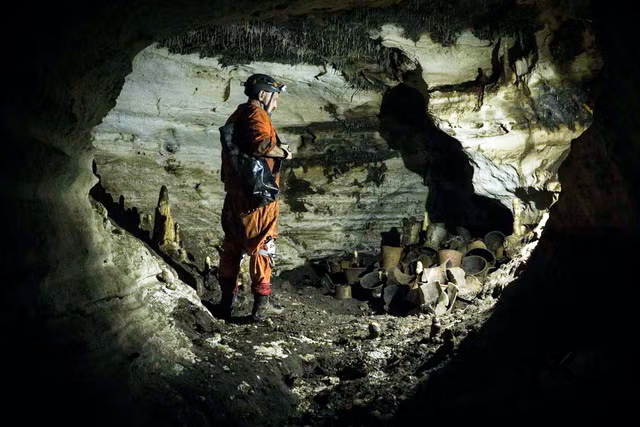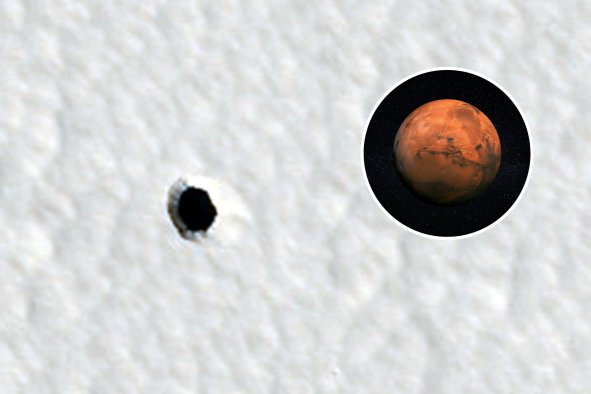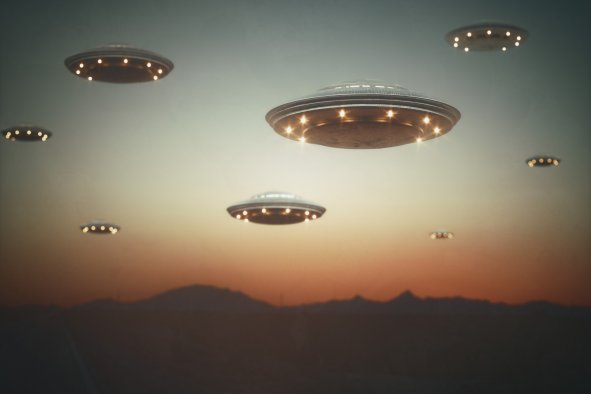NASA's James Webb Space Telescope has uncovered an unprecedented collection of ancient supernovae.
Astronomers announced that they found 10 times more of these stellar explosions than were previously known to have existed in the early days of the universe. Some of these 80-ish newly discovered supernovae exploded when the universe was only around 2 billion years old—the universe today is about 13.8 billion years old—making them some of the oldest ever found.
"Webb is a supernova discovery machine," Christa DeCoursey, a third-year graduate student at the Steward Observatory and the University of Arizona in Tucson, said in a NASA statement. "The sheer number of detections plus the great distances to these supernovae are the two most exciting outcomes from our survey."
Supernovae are enormous explosions that occur when a star dies. They send out huge amounts of energy as the star's core collapses in on itself when it runs out of fuel. These supernovae often leave behind black holes or neutron stars when the original star is large or white dwarfs for smaller stars.
The JWST Advanced Deep Extragalactic Survey (JADES) astronomers found these new supernovae within a minuscule patch of sky, the equivalent of the thickness of a grain of rice held at arm's length.
"Because Webb is so sensitive, it's finding supernovae and other transients almost everywhere it's pointed," JADES team member Eiichi Egami, a research professor at the University of Arizona in Tucson, said in the statement. "This is the first significant step toward more extensive surveys of supernovae with Webb."
The astronomers detected these ancient supernovas thanks to a phenomenon known as cosmological redshift, which is where the light from distant galaxies appears more red than it should be. This occurs because the universe is expanding, causing the space between galaxies to stretch. Light stretches in a way that makes it shift toward the red end of the spectrum—because red light has a longer wavelength than blue light—meaning that when astronomers observe light from distant galaxies, they see this redshift, which tells them that those galaxies are moving away from us due to the expansion of the universe.
"This is really our first sample of what the high-redshift universe looks like for transient science," Justin Pierel, a NASA Einstein Fellow at the Space Telescope Science Institute (STScI) in Baltimore, Maryland, said in the statement. "We are trying to identify whether distant supernovae are fundamentally different from or very much like what we see in the nearby universe."
The JWST's discovery of these 80 new supernovae was revealed by astronomers from the JADES program in a press conference at the 244th meeting of the American Astronomical Society in Madison, Wisconsin. Before the JWST was launched, only a few supernovae had been discovered to have a redshift value that corresponded to having existed when the universe was younger than around 3.3 billion years old
One of the newly discovered supernovae exploded when the universe was only 1.8 billion years old, making it the furthest and, therefore, oldest ever found.
The astronomers are particularly interested in types of supernovae known as Type Ia supernovae, which have a predictable intense brightness. This means that they can be used to calculate the expansion rate of the universe using redshift. In this recent finding, they discovered at least one Type Ia supernova from when the universe was 2.3 billion years old, making it the oldest known Type Ia supernova. This may help scientists study if the brightness of these supernovae changes with redshift, which would impact their ability to be reliable predictors of the universe's expansion rate.
These findings may also help astronomers study how supernovae in the early universe were different from those of today and how this might have affected the formation of early stars and planets.
"We're essentially opening a new window on the transient universe," STScI Fellow Matthew Siebert, lead of the spectroscopic analysis of the JADES supernovae, said in the statement. "Historically, whenever we've done that, we've found extremely exciting things — things that we didn't expect."
Do you have a tip on a science story that Newsweek should be covering? Do you have a question about supernovae? Let us know via science@newsweek.com.
Disclaimer: The copyright of this article belongs to the original author. Reposting this article is solely for the purpose of information dissemination and does not constitute any investment advice. If there is any infringement, please contact us immediately. We will make corrections or deletions as necessary. Thank you.



